I noticed a strange, musty smell in my basement that wouldn’t go away. I cleaned everything, opened windows, even lit candles—but nothing worked. Then I found mold hiding behind a shelf, and honestly, it scared me. That’s when I asked myself: do air purifiers help with mold?

After dealing with it myself, I learned what really works. Some things help, some don’t—but a mold purifier with the right filter can make a big difference. In this guide, I’ll share what I’ve tried, what helped, and how to remove mold from air in a smart way.
If your home smells off or you’ve seen signs of mold, you’re in the right place. Let’s fix it together.
What Is Mold and Why Is It a Problem?
Mold is a type of fungus that grows in damp places. You might find it in basements, bathrooms, or anywhere that stays wet and dark. It spreads through tiny spores that float in the air—even if you can’t see them.
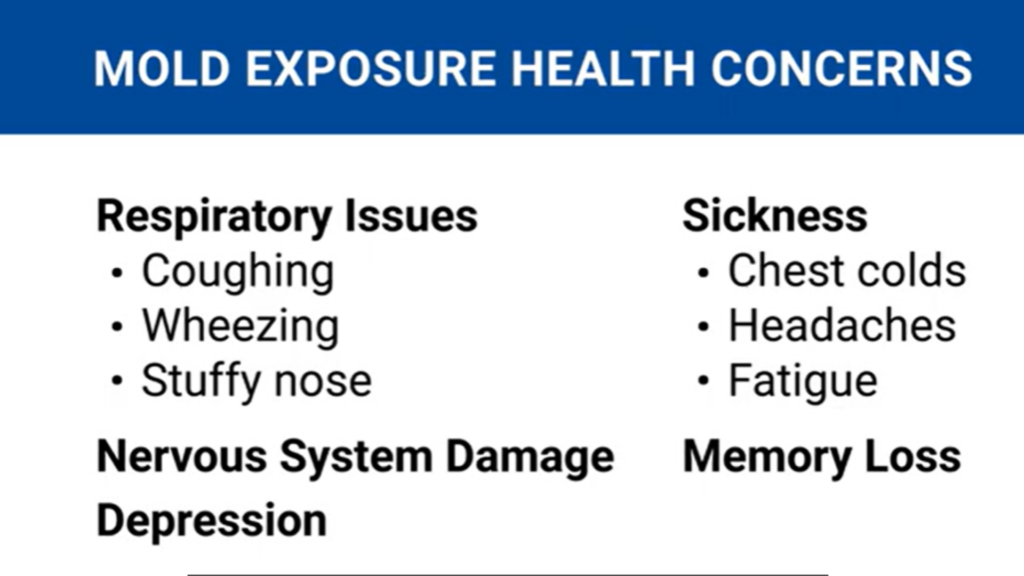
Mold is a big problem because it spreads fast and hides well. In my case, it started behind a shelf after a few rainy weeks. The air smelled musty, but I didn’t notice the mold until it was already growing on the wall.
It’s not just the smell or the look. Mold can also make people feel sick. If you have allergies or asthma, mold can make things worse. It can cause sneezing, coughing, or itchy eyes.
Breathing mold spores can make allergies worse and harm your lungs. That’s why it’s so important to clean the air, not just the walls. Spores can stay in the air even after you wipe the mold away.
That’s where an air purifier helps. A good one can remove mold from air and stop it from coming back. I didn’t know that at first, but once I used a purifier, the air felt fresh—and the musty smell was gone.
Do Air Purifiers Help with Mold? (Here’s the Real Answer)
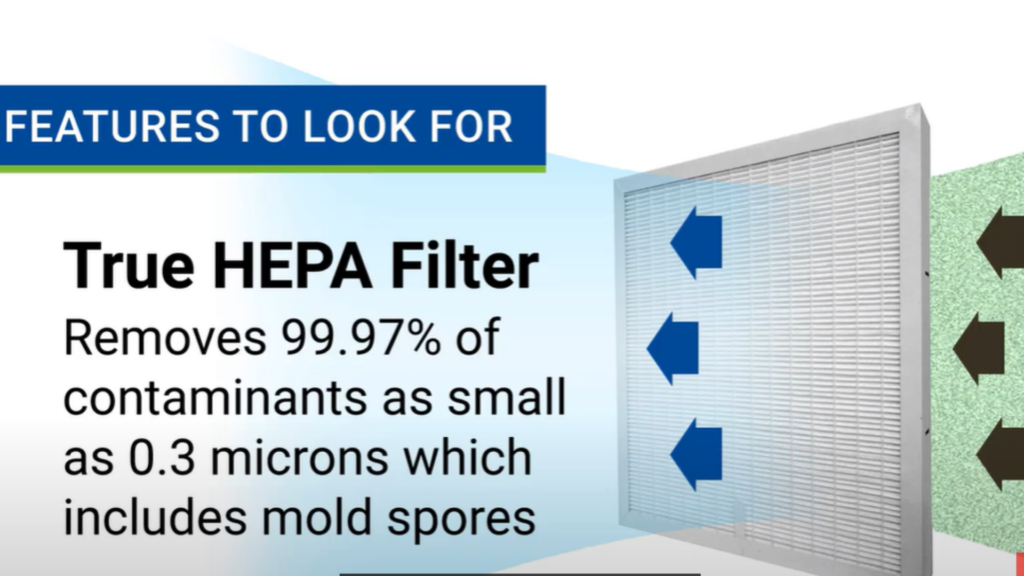
Yes, air purifiers help with mold in the air—but they don’t do it all. I learned that when I found mold in my basement. I cleaned what I could, but the musty smell stayed. That’s when I tried using a purifier.
Here’s what they do: Air purifiers pull tiny mold spores out of the air. These spores are what you breathe in—and they can make you sick. A good filter, like HEPA, traps them before they reach your lungs.
But here’s the catch: purifiers don’t clean mold off your walls or floors. If you leave the mold growing, it will keep coming back. So, you still have to scrub and fix the source of the moisture.
In my case, I cleaned the shelf, dried the room, and ran a mold purifier. It worked. The smell went away, and the air felt fresh. I noticed I sneezed less, too.
So, do air purifiers help with mold? Yes. Just know they work best as part of a full plan. Clean the mold, dry the space, and run the purifier daily.
How Air Purifiers Work Against Mold Spores
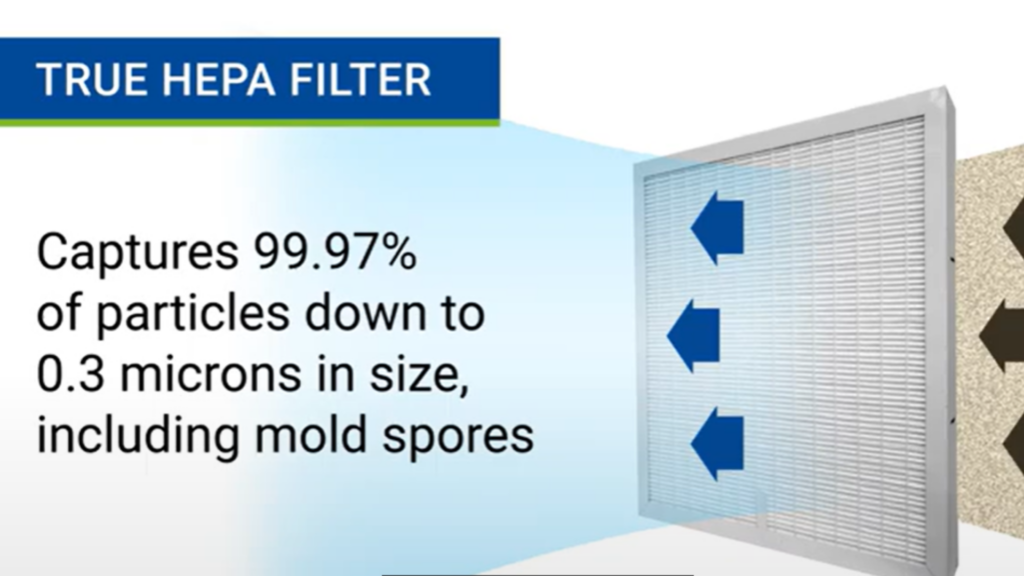
Air purifiers can help with mold in the air. They trap the spores before you breathe them in. That’s a big deal if you have allergies or just want to feel better at home.
Most purifiers use a HEPA filter. It’s like a fine net that grabs tiny bits in the air. Mold spores are small, but not too small for HEPA. These filters can catch almost all of them.
Some purifiers also have carbon filters. These don’t trap spores, but they soak up bad smells. If your room smells musty, this can help a lot. Mine did right away.
You might also see purifiers with UV lights or ionizers. UV lights can kill spores, but only if the spores stay close to the light for a while. That doesn’t always happen. Ionizers can make spores fall from the air, but some also make ozone, which isn’t safe to breathe. I skip those.
Quick tip: If you want to remove mold from the air, look for a purifier with a true HEPA filter. That’s what worked best for me. My air felt fresh, and I didn’t sneeze as much.
Best Air Purifiers for Mold (Tried & Tested Picks)

Short Answer: The best air purifiers for mold have a true HEPA filter, fit your room size, and run quietly. I’ve tried a few, and here are my top picks.
When I first started looking for an air purifier, I was overwhelmed. So many brands and features! After testing a few in my own home, I found a few that really worked. These are the ones I’d recommend to a friend.
I looked for three main things: a true HEPA filter, a good CADR rating (which tells you how fast the air is cleaned), and how quiet it runs. I didn’t want a loud machine in my bedroom!
🏠 Best for Large Rooms: Levoit Core 600S
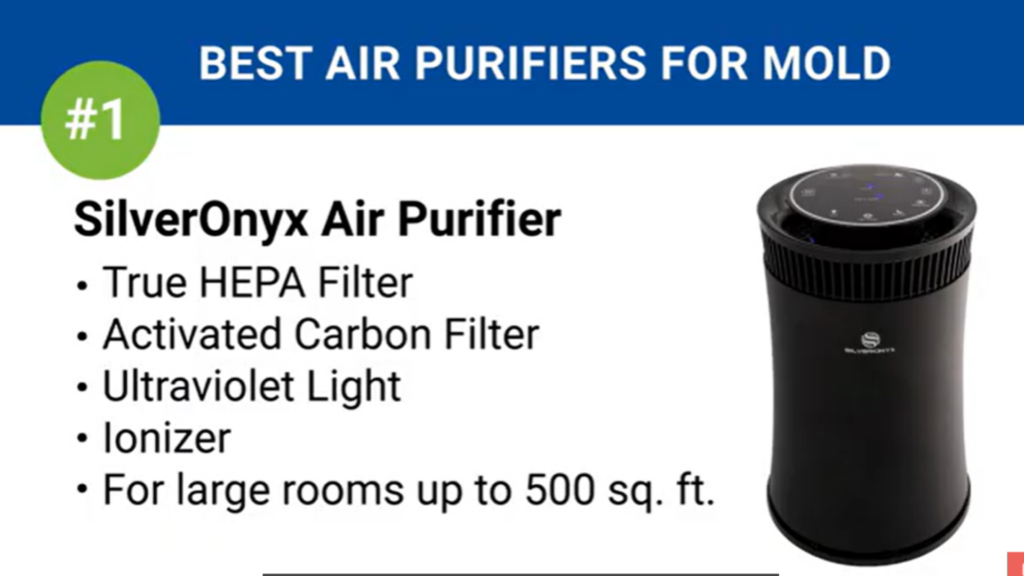
Short Answer: The Levoit Core 600S is a great choice if you need an air purifier for a large space.
I use this one in my living room. It’s fast, quiet, and works well for large areas up to 600 square feet. It has a true HEPA filter that captures mold spores quickly. Plus, you can control it from your phone with the app.
✅ Works for large rooms
✅ Real-time air quality display
✅ True HEPA + carbon filter
❌ Bulky design
💸 Best Budget Pick: GermGuardian AC4825
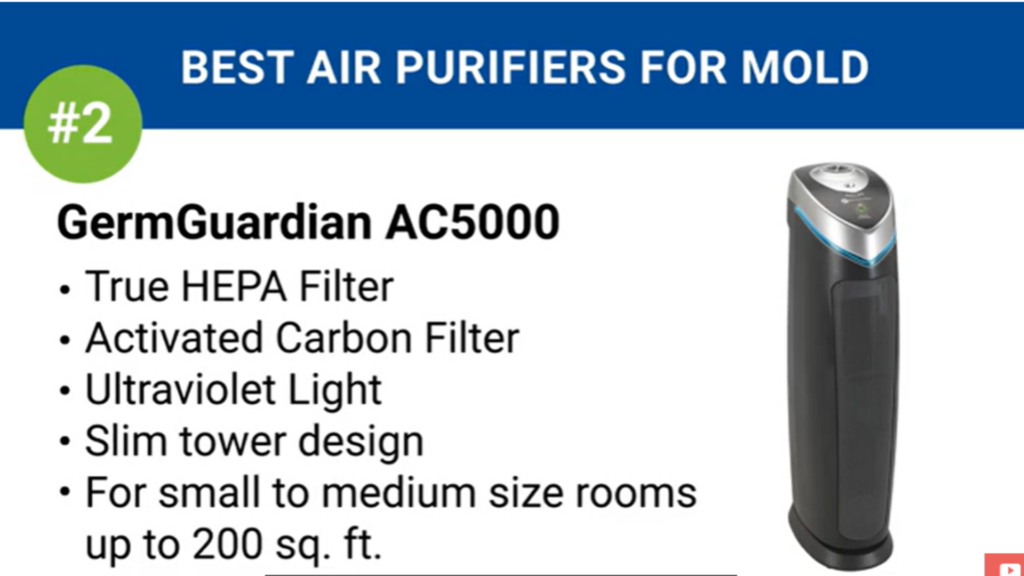
Short Answer: If you’re on a budget, the GermGuardian AC4825 is a solid and affordable mold purifier.
I used this one in my guest room and saw a noticeable difference in the air after just two days. It’s simple and effective, but it doesn’t have fancy features.
✅ Affordable
✅ HEPA filter with UV-C light
✅ Compact size
❌ Louder on high
❌ No smart features
😴 Quietest Air Purifier for Bedrooms: Coway Airmega AP-1512HH
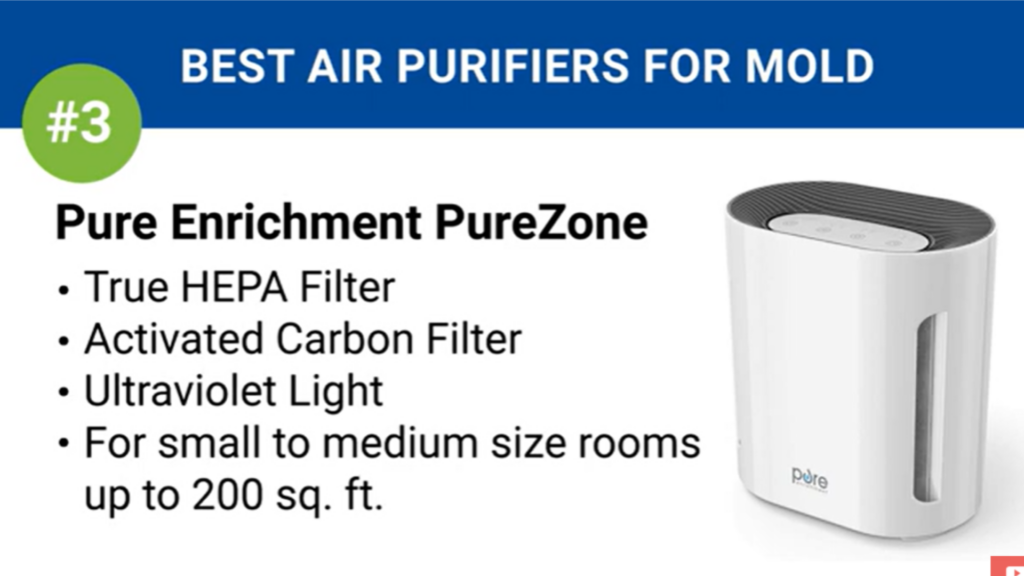
Short Answer: The Coway Airmega is quiet and perfect for bedrooms if mold is affecting your sleep.
I use this one in my bedroom. It’s so quiet, I often forget it’s even on. It has an auto mode that adjusts based on the air quality. Plus, it uses a true HEPA filter, so it’s great for mold.
✅ Very quiet on low
✅ Smart sensor adjusts speed
✅ Sleek and modern design
❌ Filter replacements can be expensive
✅ What to Look for in a Mold Air Purifier
Short Answer: Look for a HEPA filter, a high CADR rating, and a size that matches your room.
When shopping for an air purifier, stick to the basics. Mold spores are tiny, so you need a true HEPA filter, not just a “HEPA-like” filter. The CADR rating shows how fast it can clean the air. Make sure the unit fits your room size for best results.
Here’s a quick checklist to help:
- ✅ True HEPA filter
- ✅ High CADR rating
- ✅ Works quietly, especially in bedrooms
- ✅ No ozone (avoid ionizers that create it)
- ✅ Carbon filter for musty smells
Air Purifier vs Mold Remediation: What’s the Difference?
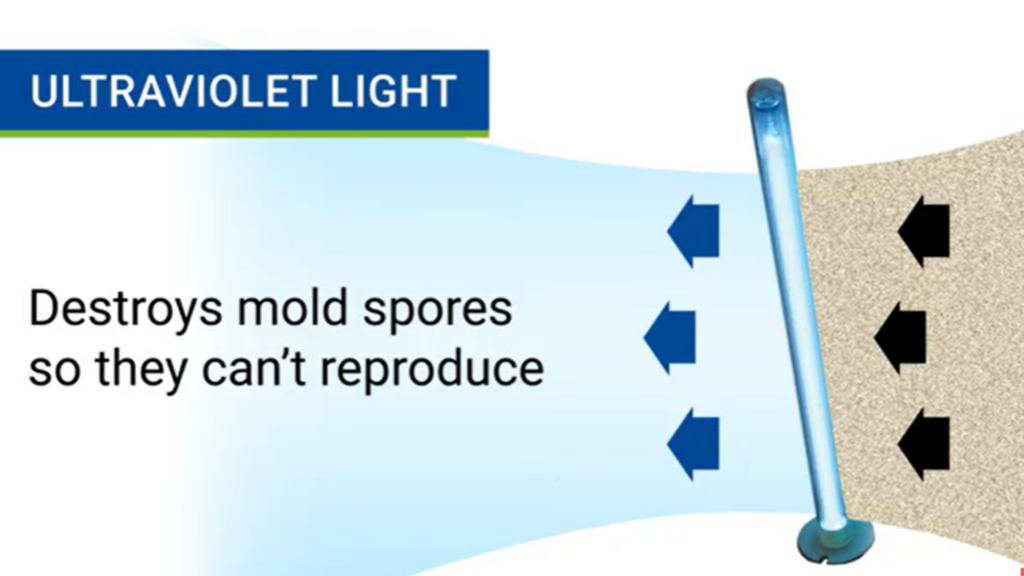
Quick Answer: Air purifiers clean mold spores from the air. Mold remediation removes mold from surfaces and stops it from coming back.
When I first found mold in my basement, I tried to fix it on my own. I scrubbed the wall and ran an air purifier. At first, it helped. The musty smell faded, and the air felt cleaner.
But a few weeks later, the smell came back. That’s when I learned something big: an air purifier can help, but it’s not enough on its own.
Think of it this way—mold is like a weed. The air purifier clears the seeds from the air, but the roots are still there. To fix it for good, you have to remove the mold from walls, floors, or anything it’s growing on.
Fast Fact: Purifiers help with mold in the air. But you still need to clean the mold you can see.
I called a local expert. They found mold hiding behind my basement insulation. Once they removed it and dried the space, the air purifier made a real difference. The air stayed clean, and the smell was gone for good.
So what’s the best plan?
✅ Use a pro to clean the mold you can see
✅ Run an air purifier to trap mold spores
✅ Add a dehumidifier to keep the room dry
What Worked for Me: After I had the mold removed, I kept the purifier running every day. It helped my allergies and kept the space fresh.
Tips to Stop Mold at Home (Not Just with Purifiers)
Quick Answer: To stop mold, you need to keep things dry, clean, and airy—not just use a purifier.
After I found mold in my basement, I knew I had to do more than run a machine. My air felt better with a purifier, but mold still came back.
I started making small changes. They worked—and they’re easy to do.
🌬️ Keep Air Moving
Quick Tip: Mold grows in still, damp air. Move the air, and mold won’t like it.
I left the door open and added a fan in the corner. The smell faded fast. A little airflow made a big change.
💧 Use a Dehumidifier
Quick Tip: Mold loves moisture. A dehumidifier takes that away.
I set mine to 45% humidity. The air felt dry and clean in just a day. Mold doesn’t stand a chance in dry air.
🧽 Clean Often
Quick Tip: Mold can hide in dust. Wipe it before it grows.
I dust once a week now—especially in corners and under stuff. If something’s wet, I dry it right away.
🔧 Fix Leaks Fast
Quick Tip: Small drips can cause big mold. Don’t wait to fix them.
I learned the hard way when a tiny leak turned into a moldy wall. Now, I fix every drip as soon as I see it.
✅ Easy Mold-Free Checklist
Here’s what I do to keep my home mold-free:
- ✅ Run a HEPA purifier
- ✅ Keep humidity under 50%
- ✅ Fix leaks fast
- ✅ Open windows or use fans
- ✅ Wipe dust and clean weekly
- ✅ Avoid storing wet items
- ✅ Check behind shelves and furniture
Final Note:
It’s simple stuff, but it works. Stay on top of moisture, clean your air, and mold won’t have a chance.
FAQs About Mold and Air Purifiers
Q1: Can air purifiers remove mold spores from the air?
Yes, they can.
A purifier with a true HEPA filter will trap mold spores in the air. I used one after finding mold in my basement. The musty smell got better fast. I also stopped sneezing as much. If your room smells bad or feels stuffy, a purifier may help.
Q2: Will an air purifier kill mold?
No, it won’t.
Air purifiers can trap spores in the air, but they don’t kill mold on walls or floors. Some have UV lights, but they don’t always work well. I learned I still had to scrub the mold and fix leaks. The purifier helped with the air, but not the mold I could see.
Q3: Where should I place an air purifier for mold?
Put it near the mold or smell.
I placed mine near the musty corner in my basement. It worked best there. Don’t block the fan. Keep it away from walls and let the air flow. Also, keep the door shut so it can clean just one room at a time.
Q4: How long should I run my air purifier?
Run it all day.
Mold spores float around all the time. I leave mine on 24/7. It’s quiet, so I don’t notice it. Some purifiers have a smart mode that changes speed on its own. Just plug it in and let it run.
Q5: Do I need a HEPA filter to fight mold?
Yes, you do.
Only true HEPA filters trap mold spores. “HEPA-like” filters won’t work. I bought a cheap one at first, and it didn’t help. Then I got one with a true HEPA filter, and I could tell the air was cleaner right away.
Conclusion: My Final Take on Using Air Purifiers for Mold
Short answer: Yes, air purifiers help with mold in the air, but they work best when used with a full mold plan.
When I first smelled mold in my basement, I wasn’t sure what to do. I tried candles, opened windows, and cleaned everything I could. But the air still felt wrong. It wasn’t until I used a true HEPA air purifier that things changed.
The musty smell went away. I sneezed less. The room felt fresher. That’s when I knew I was on the right track.
But here’s the truth: an air purifier alone won’t fix the mold. It pulls mold spores from the air, but it can’t clean your walls or fix leaks. Think of it like using an umbrella in a storm—you stay dry, but the rain still keeps falling.
So what works?
✅ Remove any visible mold
✅ Fix leaks or damp areas
✅ Run a HEPA purifier every day
✅ Use a dehumidifier to keep things dry
If you’re wondering, “Do air purifiers help with mold?”—I can say from experience: Yes, they do. But only if you use them the right way.
Keep it simple. Keep it dry. Keep the air clean. That’s what worked for me—and it can work for you too.
My name is Carlos Gadd, and I am the creator of AirPurityGuide.com.. With a passion for footwear, I share my experiences, insights, and expertise about shoes. Through my blog, I aim to guide readers in making informed decisions, finding the perfect pair, and enhancing their footwear knowledge. Join me on this journey to explore everything about shoes!